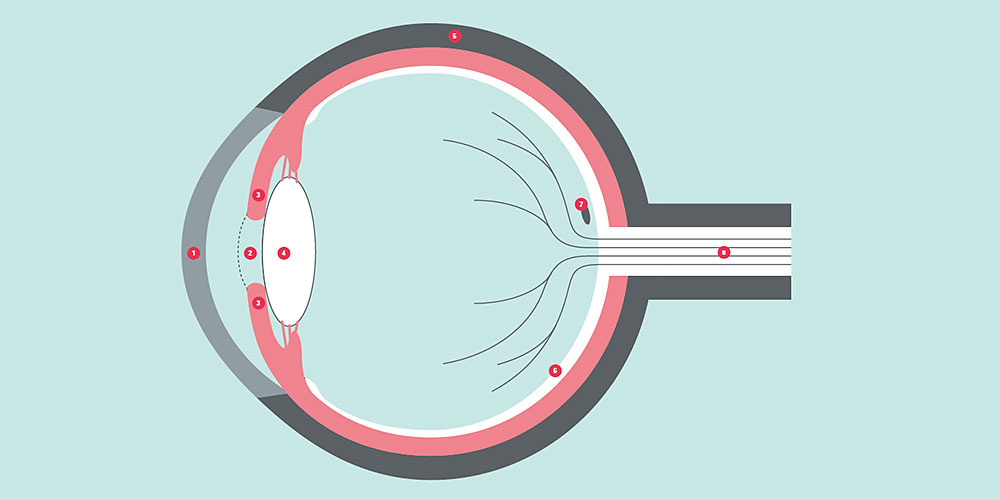How the eye sees.
When we look at an object, we see it – instantaneously. What sounds simple actually relies on a complex process of multiple coordinated steps. It begins when light from the object we are looking at is reflected. Within fractions of a second, the light reaches our eye, which processes it and passes it on to the brain.
1. Light enters the cornea. The cornea is transparent and kept moist by lacrimal fluid. This allows it to refract and focus the light, which then continues its journey through the eye.
2. The light reaches the inner eye via the pupil. Although the pupil is also transparent, it looks black because the retina behind it absorbs all the light. Depending on how bright our environment is, the pupil changes size so that more or less light reaches the retina.
3. Our eye color depends on pigment cells in the iris. High pigmentation
results in brown eyes, while low pigmentation results in blue. Also, muscles in the iris are responsible for changing the size of the pupil.
4. The lens lies behind the pupil. It is also transparent, and refracts the light again. Depending on whether the object is close or far away, a muscle contracts or relaxes to alter the shape of the lens. This helps to produce a clear image.
5. The white part of the eye is called the sclera. It protects the eyeball and, along with the interocular pressure, is responsible for maintaining the eye’s shape. The sclera has nothing directly to do with light that enters the eye. A gap in the sclera provides space for the cornea, the area where light first reaches the eye.
6. Finally, the retina perceives the light. This means that photoreceptors
transform the light information into electrical impulses that the brain can then process. The rods and cones on the retina allow us to recognize colors and see in different levels of light, for instance.
7. In the center of the retina lies the macula, which is about six millimeters in diameter. At the center of the macula, we find a much smaller area where our keenest vision is located – the fovea centralis. In photographic terms, the resolution is at its highest here. In daylight, the object we are looking at appears sharpest when it is in the center of our line of sight because the light in our eye falls directly on the fovea centralis.
8. The optic nerve receives the electrical signals from the retina and
passes them on to the occipital lobe in the cerebral cortex. Once there, they can finally be interpreted as images.
More articles in the current issue of UNI NOVA.

